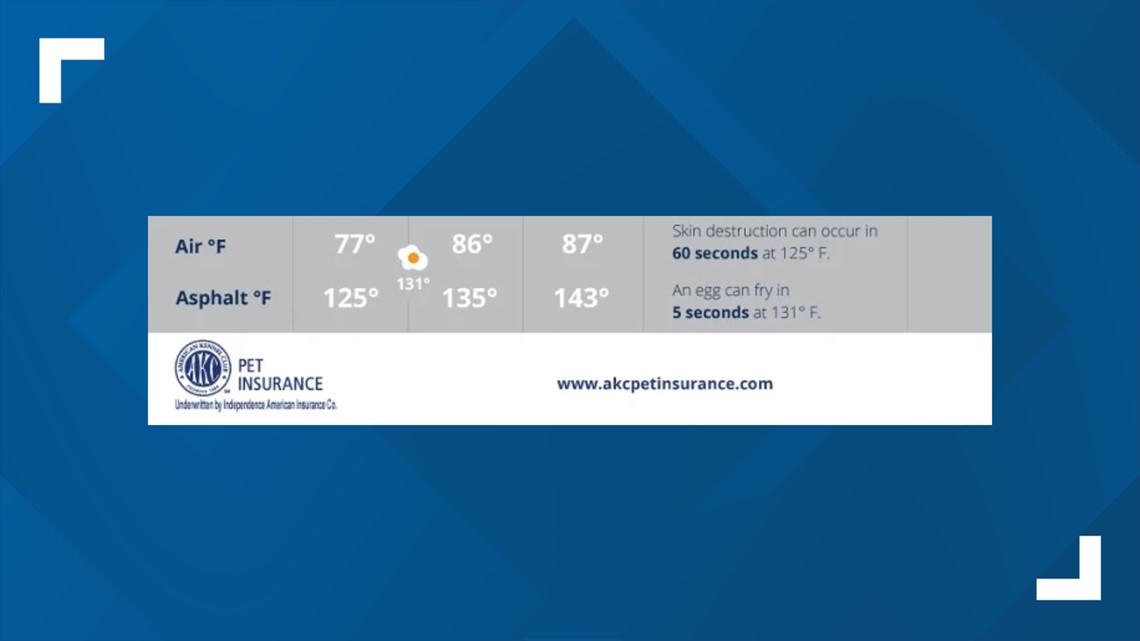HUNTSVILLE, Ala. — For starters, let's break down the difference between how concrete and asphalt weather in hot temperatures.
Asphalt ends up hotter than concrete because of the difference in brightness. An asphalt-covered surface is darker and will absorb and retain more heat.
"Concrete doesn't absorb the heat the way that asphalt, black asphalt does," said Director of Huntsville Animal Services, Karen Sheppard.
According to the American Kennel Club, weather sitting in the high 70's to 80's can make the temperature of asphalt sit at over 100 degrees.


So, the rule of thumb is that if a surface is too hot for you to walk on comfortably without injury, it's probably too hot for your dog as well.
"If you're concerned about it, you can take and put your hand and hold it down firmly on the asphalt, or you can take your shoes and socks off and try," said Sheppard.
Damaged and blistered paws are the main concern, "It can cause discomfort and it can definitely blister them badly," said Sheppard.
But in addition, hot asphalt can also increase a dog's body temperature and contribute to heatstroke.
So, it's best to just avoid asphalt when walking your dog this summer altogether.
"Get off of it and walk on the concrete or walk across the grass," said Sheppard.
Be aware of artificial grass as well, as it can too become extremely hot on a sunny, high-temperature day.



